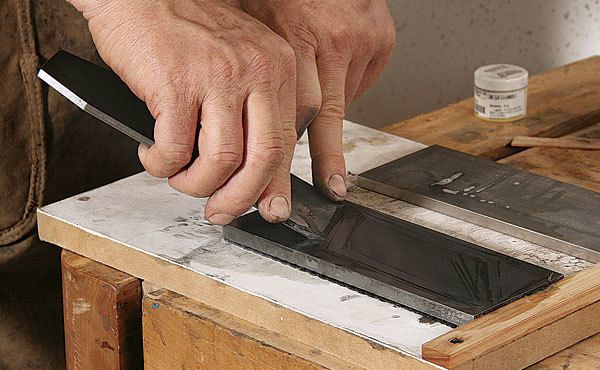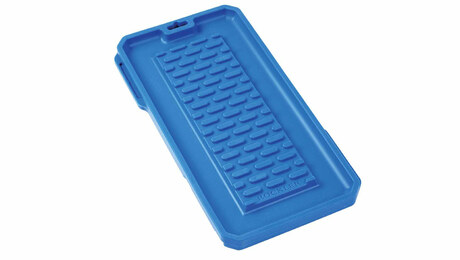Get Sharp the Diamond Way
How to sharpen chisels and planes using diamond plates

Synopsis: Woodworkers love to argue about the best sharpening method for their tools, and Brian Boggs has listened to most of the arguments, trying and losing patience with many of the methods out there. But more and more, he gravitates toward diamond sharpening these days. Diamond cuts fast and requires virtually no maintenance. It seems to sharpen every type of steel well, and is available in paste form in a wide array of grits, allowing Boggs to turn any piece of steel, aluminum, brass, or wood into a sharpening or honing tool. Read on for this veteran woodworker’s tips on how best to combine diamond stones, lapping plate, and diamond paste to get your tools super sharp and keep them that way.
I ’ve been listening to the debate over the virtues of different sharpening systems since my first days in the shop 31 years ago. The array of opinions broadens with each new stone technology, and I’ve tried most of them. I still like to explore which system is best for a given job and to retest them over time to see if my conclusions hold true as my techniques and skills evolve. I’m sure I won’t end the sharpening debate here. But having multiple options at my disposal, I’ve watched most of them gather dust as I gravitate to diamond sharpening time after time. There are three main reasons for this.
Speed. Diamond cuts fast and requires virtually no maintenance. My current diamond plate has kept its flatness for five years and still cuts quickly.
Versatility. Diamond seems to sharpen every type of steel well, whereas softer abrasives like ceramic or waterstones don’t perform as well on some of the alloys I sharpen, like A-2 steel, or on carbide.
Finally, diamond abrasive is available in paste form in a wide array of grits, allowing me to turn any piece of steel, aluminum, brass, or wood into a sharpening or honing tool (see “Diamond paste can sharpen any shape,” p. 40).
While diamond stones may cost more to buy than water- or oil stones, the process is quicker and the maintenance is nil. So I save time—and money—each time I sharpen. Diamond stones and paste both use industrial diamond particles to do the cutting. In diamond stones, the particles are bonded to a metal substrate. In paste, they are suspended in oil. I’ve used a variety of diamond stones, but have settled on Trend and Eze-Lap stones, which are both excellent. I use paste from Betadiamond.com.
I sharpen in four stages: grinding, truing and sharpening, polishing, and stropping. After grinding the tool on an electric wheel, I create a bevel on a diamond stone. I polish the bevel and the back with diamond paste on a steel lapping plate, and I finish by stropping away the burr on a wooden block charged with paste.
Get sharp on a diamond stone
With a new diamond stone and a good grind on the blade, it should take only a few strokes to create an even bevel at the tip of the blade. The fewer strokes you take, the less likely you are to round the bevel and waste metal. I sharpen freehand, and I skew the blade as I push forward and back. If you use a honing guide, use your normal approach. Check your progress after the first few strokes. That might be enough to create the bevel.
For the full article, download the PDF below:
Fine Woodworking Recommended Products

Mist Coolant System

Rockler Silicone Sharpening Stone Tray

Olfa Knife








Log in or create an account to post a comment.
Sign up Log in